

Card collecting has several fun aspects – the joy of receiving the pack of cards, the thrill of ripping said pack and the euphoria that comes with pulling a hit card (or just any card you desire).
However, an important aspect of the hobby is often severely overlooked. This is even more important today as collecting has become an increasingly lucrative investment — that is how to properly store these trading cards.
This article is a comprehensive sports card storage guide to ensure your cards are kept in pristine condition.
Buy top loaders from Topps.com
Properly storing your cards can be quite an inconvenience, so why bother? Let’s talk a little about that.
While Topps began producing baseball trading cards as we know them in 1952, it wasn’t until the 1980s that sports cards were viewed as a valuable collectible item. The growing popularity of basketball and the evolution in photography combined to define trading cards.
The worth of previously released trading cards soared, and the people lucky enough to have properly stored their cards were the real winners.
Everyone learned a lesson – the value of trading cards depends on the card’s condition. A lot of money and effort goes into collecting trading cards. Properly storing them goes a long way in ensuring they hold value, and you can make more money when you decide to sell them.
Even people who collect just for fun have to invest in properly storing their cards. When cards are kept in pristine conditions, you’ll not only enjoy your collection more but it will be more valuable.
Properly storing your cards is even more important if you’re a collector looking for an ROI. Damaged cards are worth little no matter how rare they are compared to cards in perfect condition.
A properly stored collection is worth much more than one with damaged or compromised cards. Depending on the card in question, this drop in value could be anything between a few hundred dollars to several thousand of dollars.
While grading is not an exact science, as two people might disagree on the condition of a particular card, the folks at PSA Authentication and Grading have come up with a condition ranking to help grade your cards.
The goal is to keep your cards in Mint or Near Mint conditions as those are considered flawless and would attract the most value.
With that out of the way, let’s jump into how to properly store your trading cards to ensure they remain in Mint or Near Mint conditions.
There exist several options you can use to store your trading cards. The best option for you depends on several unique factors. While we shall discuss all that soon, there are some fundamentals we’ll like to first point out.
If you ignore these, your trading cards might be damaged no matter the storage method you use. Keep this guideline in mind, and you’re on your way to correctly preserving your trading cards.
These fundamentals of properly storing your cards remain true no matter the storage method you decide to utilize. Having discussed that, let’s discuss the various storage methods available for your trading card collection.
The first card storage option we’ll talk about is card storage boxes. These are boxes that are designed to store cards. They come in handy when you’re building up your collection and have several cards that aren’t worth much.
They are also perfect for storing cards in top loaders, graded card cases or raw cards that aren’t worth anything. Storage boxes are available in different shapes and sizes to fit your specific needs. If you have cards in top loaders, consider looking for a “storage box for top loaders.”

Pros
Cheap – Card storage boxes are very affordable compared to other card storage methods. An especially large box capable of storing over 5000 trading cards sells for less than $10.
Great for low-value cards- while we all hope to pull a hit or chase card in every pack, that still leaves dozens of “crappy” cards in each pack you open. You can’t just throw away these cards as they might jump in value later, or you’ll need them to complete a set. Storage boxes are perfect for keeping these cards for later.
Portable – You can store thousands of cards in a single storage box that doesn’t take up a lot of space. This makes it easy to tear away or transport when you’re moving.
Cons:
Offers little protection – Most collectors use storage boxes to organize their collections rather than as a way of protecting them. This is especially true for cards without other protection (sleeves, top loaders, etc.). The box is spacious, and cards will fly around anytime it’s moved unless they have been properly padded.
Penny sleeves are thin, clear polypropylene sleeves used to store trading cards. They vary in size; however, most sleeves are approximately the same size as trading cards, with a 1/16 inch leeway. A penny sleeve keeps your card safe from any surface damage resulting from dust, debris, fingerprints, and oil.
It also prevents cards from rubbing against themselves, which can cause damage. To use one, insert your card into the penny sleeve, and that’s all. Penny sleeves would better serve as secondary protection before storing your card in other methods listed in this article.

Purchase penny sleeves on eBay
Pros
Cheap – As their name implies, penny sleeves are cheap. You can buy a pack of $100 for $2 to $3. You can easily buy bulk penny sleeves. A 10-pack of 100 counts, which contains 1,000 sleeves, goes for $20 on Amazon.
Flexible – Penny sleeves are flexible, and you can store your cards inside them before putting them in a top-loader or storage box.
Cons
Do not offer enough protection – At best, penny sleeves are secondary protection. They offer just superficial surface protection and are not meant to be used alone to store your cards.
Can nick cards – You have to take care when inserting the cards as especially thick penny sleeves can nick your cards.
Do not stack well – Penny sleeves are made from plastic, so this shouldn’t come as a surprise that they are slick. You wouldn’t be stacking any of your cards stored entirely with penny sleeves.
Looking for the best penny sleeve? Check out how 11 different types fared in our testing.
Top loaders are the most popular method for storing single cards. Made of stiff plastic, top loaders come in various sizes and thicknesses. There’s a slot where you can easily drop in your card. For relic and thicker cards, wider opening top loaders for cards exist to accommodate them.
For the best results, use penny sleeves and top loaders. When you place the cards in the top loader alone, the hard plastic will scrape the card, causing damage. Here pictured are ultra pro top loaders.

Pros
Affordable – Top loaders are relatively cheap. You can get 100 top loaders for around 10 cents a case.
Offers Good protection – Unlike bulk penny sleeves, top loaders for cards are made of hard sturdy plastic. They are perfect for transporting cards, given their hard exterior and how well they hold up over time.
Minimum Space consumed – while top-loaders are made of sturdy plastic, they are no larger than the standard card size. They can easily be placed in a box without taking up much space.
Cons:
Cards may slip or slide out – This is an issue when you get a top-loader that doesn’t perfectly fit your card. Some people try to prevent this by putting tape over the top, which leads to even more damage.
Require penny sleeves – While top-loaders are sturdy, they’ll ruin any card put into them without secondary protection. This is because trading cards can bounce around between the edges of the top loader. To prevent this, you have to invest in buying penny sleeves in addition to your top loaders.
This is one of the most used trading cardholders, and it’s easy to see why. Basebakk card savers are the perfect combination of penny sleeves and top loaders. They are resilient and sturdy and can be used to store several cards without bothering about their size.
It’s stronger than a penny sleeve, more flexible than a top loader and keeps a firm grip on the card to eliminate the risks of it falling out. Card Savers for PSA submissions are also a necessity.

Check out prices for semi rigid Card Savers on ebay
Pros
Easy to load – Card savers come with an extra “lip” at its top that makes expanding the case to insert a card possible. This eliminates any risk of damaging the card as you insert it into the card saver.
Flexible and firm – Card savers take the best parts from top loaders and penny sleeves and create a near-perfect card storage gem.
Affordable – Card savers are affordable, and you’ll save on the extra expense of buying penny sleeves. A 100-pack of card savers sells for around $10.
Versatile – Can fit a different range of cards. You could put a large 1960 Bowman, strip cards or relic cards.
Cons
Not sturdy – While card savers offer more flexibility and are perfect for storing your cards at home, you’d want to invest in a more sturdy option if you want to take your cards on a road trip. Card savers are especially notable for bending due to how flexible they are.
Certainly a collector’s favorite, binders work the same way a photo album works. Binders are especially important when you have many cards and desire ease of display and portability.
Sports card pages and binders are especially great for displaying complete sets you’ve collected. Just be sure to isolate the more valuable cards worthy of grading and store them appropriately.

Pros
Perfect for many cards – Binder sheets are recommended when you have a high quantity of cards to store. Up to 300 cards can easily fit in a 34-sheet binder.
Sturdy – Binders are made of even studier plastic than penny sleeves and enjoy the additional coverage of the page as exterior protection.
Easy display – While some people store their cards away, waiting for years to take a look at them, most collectors love to view and show off their cards. Binders are the best storage option for such collectors as you can rapidly look through your entire card collection.
Cons
Not good for high-value cards – While the exterior cover can offer additional protection, binders are no better than penny sleeves when it comes to protecting your cards. There’s also the risk of your cards falling out as the top of the sheet is open.
Can damage cards – You have to be careful when loading your cards as a little slip can lead to corner wear/tear.
Bulky – Pages and binders can be quite expensive compared to penny sleeves and top loaders. Additionally, binders take up a lot of space.
One from the 1900s, screws-down holders can be an option for storing your high-value cards. They are sturdy plastic cases that can (sometimes) safely secure your cards. A screw-down holder comprises two plastic pieces.
To use, you’d place your card in place and screw both plastic pieces together. You must be careful, as screwing too tight can cause your card to stick to the holder and flatten the corners. Opt for the recessed screw-down holder over the non-recessed version to prevent this.

Find screw-down holders for cards on eBay
Pros
Very Secure – Few holders can secure your card as well as a screw-down holder.
Cons
Difficult to close and open – Screw-down holders can be quite difficult to open and close. This is one of the reasons its popularity is waning.
Can ruin your card – You have to be very careful when screwing the pieces shut to ensure no part of your card is stuck between them. Additionally, do not tighten the screw too much as the pressure can make the card stick to the holder.
Heavy and expensive – Screw-down holders aren’t cheap, especially compared to penny sleeves and top loaders. They also take up lots of space.
While screws down holders were great, they had a few flaws. Foremost of which were the complications in opening and closing them. The hobby adapted by creating aptly named snap holders. They were as durable as screw-down holders but were much more time-efficient. Snap holders were clear plastics and made a “snap” sound when opened and closed.

Shop for snap card holders on ebay.
Pros
Very Secure – Just like screw-down holders, snap holders offer good protection.
Easy to display – You could easily display and handle your cards.
Cons
Expensive – Snap holders can be quite expensive, especially if you have a large collection.
Could open anytime – Snap holders were designed to quickly open and close. Some would spontaneously separate, making your card shift or fall out.
Also known as a “one touch” holder, this is a variation of the screw-down holder but with the screws replaced by magnets. It got rid of the complications of screwing and unscrewing to open your card. A magnet sealed the two pieces of plastics.

Check out the latest prices on magnetic card holders on ebay.
Pros
Easy to open – Magnetic holders can be opened and closed easily.
Cons
Expensive – Magnetic holders sell for around $1 to $3 per piece. That’s expensive, especially if you own a large collection.
The boom of the trading card industry has made the worth of trading cards surge to truly shocking amounts. Graded cards come locked in a hard case for maximum protection. You can get this by sending your cards for grading.
Top cards can easily be sold for hundreds of thousands of dollars or even a few million. Investing in top-notch card storage options is imperative if you’re lucky to own one of these top cards. You could get a fireproof safe or even register for a PWCC vault or eBay valut account that works just like a bank vault.
While we’ve tried to outline the pros and cons of each option for storing your sports cards, deciding on one can be quite tricky. There’s no one right way to store your trading cards. The right way for you depends on several factors. Here are a few things to consider if you’re new to collecting trading cards and do not know which storage supply to purchase.
Do you wish to store your cards until you can sell them off for a profit, or do you wish to show them off frequently? If you wish to show off your cards regularly, you should go for a method that’s easy to pull out and carry. Top loaders and binders are perfect for this.
If you have a limited budget and many cards, putting all your cards in a magnetic holder wouldn’t be possible. You can invest in penny sleeves, cardboard boxes or a binder.
Space is also a good thing to consider before picking a storage option for your trading card. Do you have unlimited space to store your cards, or do you have a small corner in your closet? If you have limited space, you’ll be better served by buying cardboard boxes rather than other storage options that require much space.
It’ll be unwise to store high-value cards in a penny sleeve. While this isn’t much of a consideration for new collectors, anyone can be lucky to pull a chase card. If you are, investing in a proper storage option is highly recommended.
You do not want a twenty thousand trading card loose in a cardboard box. Likewise, you do not want to pay top dollar to store a bunch of worthless cards unless there’s a major sentimental value.
We’ve discussed all common card storage techniques to ensure your cards stay protected from damage. Properly storing your cards ensures your cards stay in mint condition and do not lose their value. Various methods have been discussed; pick one that best fits your needs and budget.
Every supply discussed here (baring vaults) is available for purchase in any hobby shop. A quick visit would set you on your way to properly storing your cards and ensuring they do not lose value.
2025 Topps All Star Game Mega Box Product Review
Ripping the new Topps All Star Game mega box.
Is this new sports card store the BEST VALUE around?
I Tested eBay Auction Promotions So You Don’t Have To!
I deep-dove on Fanatics Collect so you don't have to (but should you?)
Panini is launching a WNBA Product at $30,000!?
Topps Chrome 2024-25 Basketball: Honest Review and Notes
Did you know this SECRET about PSA slabs? #sportscard #tcg
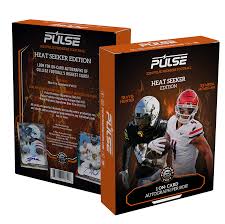



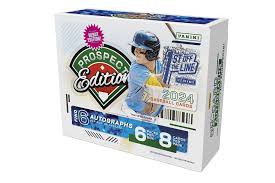
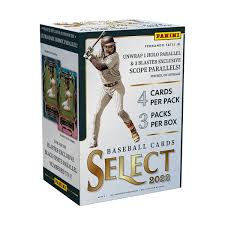
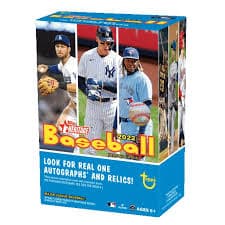
2022 Topps Heritage Baseball Blaster Box Configuration: 7 Packs per Box – 9 Cards per Box. Plus 1 extra pack.
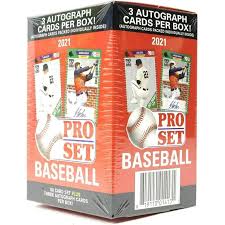
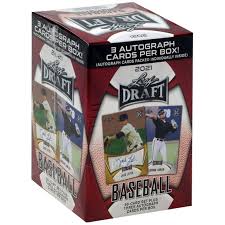
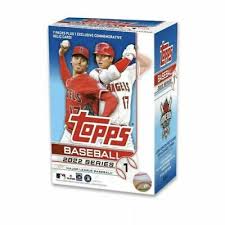


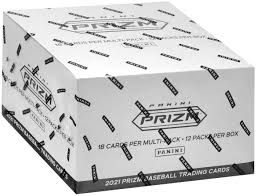

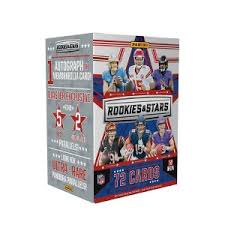

Keep up on breaking Sports Card News, our latest articles, product specials and exclusive content with expert analysis of hobby trends.

© Copyright 2025 - All rights reserved Cardlines.com / Media Techs LLC - Sports Card News, Reviews, Releases and BREAKS - #thehobby.
Important: When you click on links to various merchants on this site and make a purchase, this can result in this site earning a commission. Affiliate programs and affiliations include, but are not limited to, the eBay Partner Network.
The Ultimate 2024 Football Card Brand Tier List (Panini vs. Topps and more!)
Cardlines July 7, 2025 7:00 pm